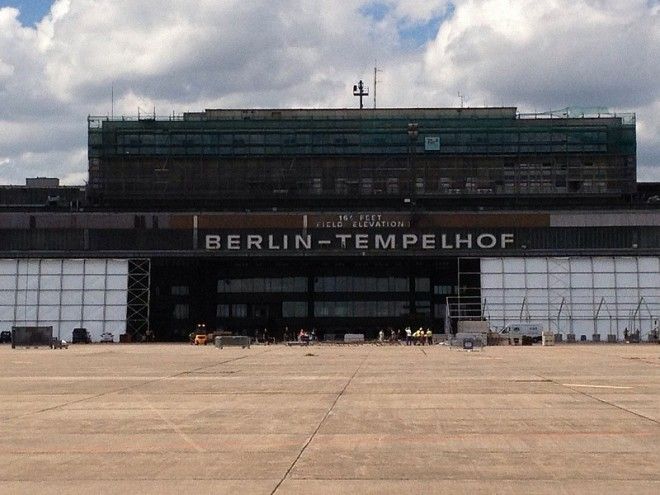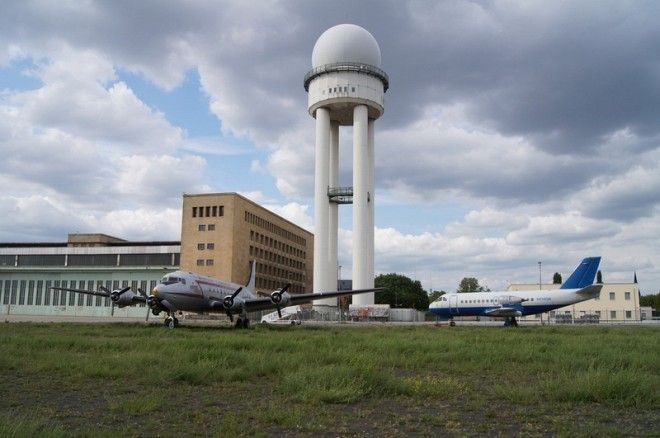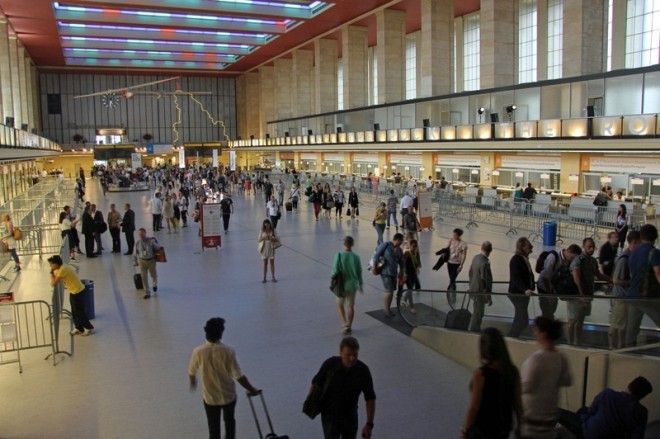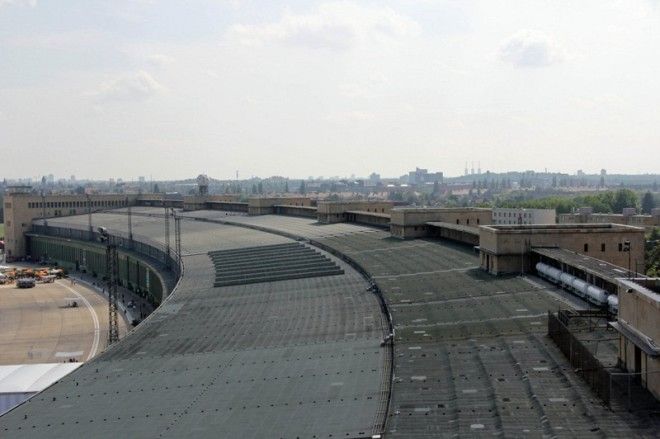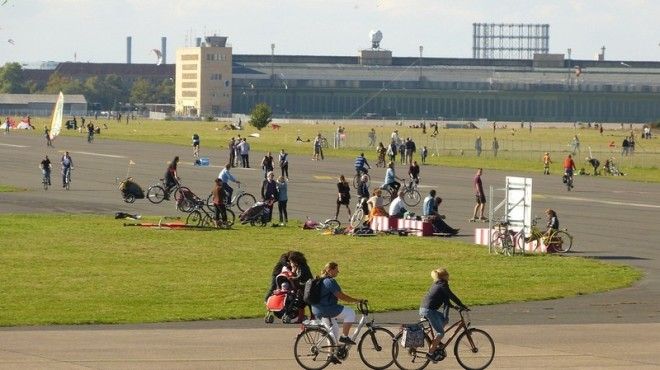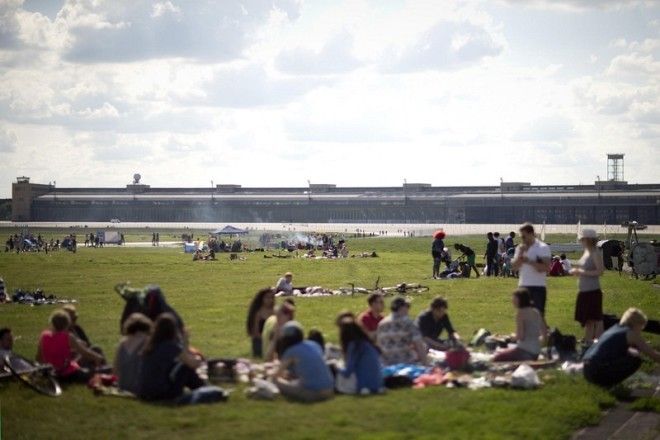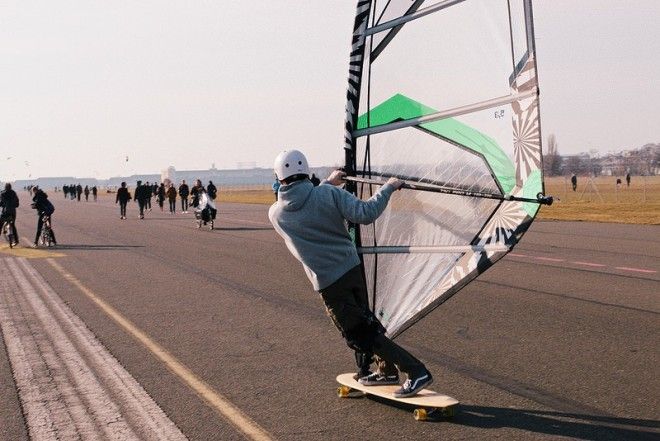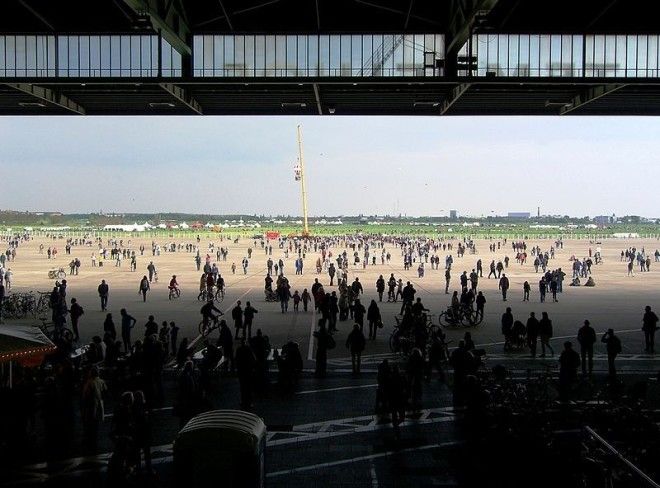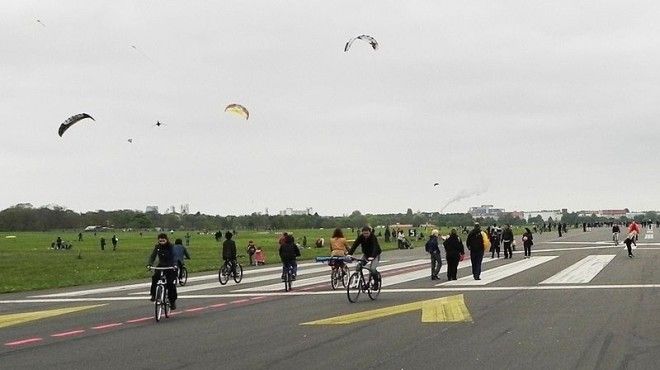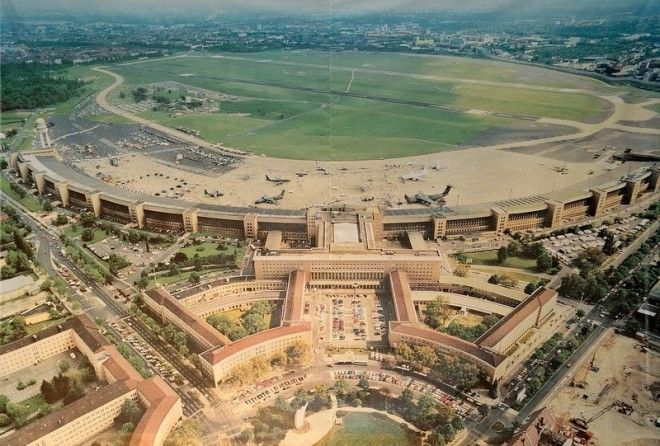The building complex was designed to resemble an eagle in flight with a mile-long semicircular hangars forming the bird's spread wings. Its large, canopy-style roof were able to accommodate most contemporary airliners in the 1950s, 1960s and early 1970s, protecting passengers from the elements. It had two parallel runways over 2 kilometers long, and the airport's main building was once among the top 20 largest buildings on earth. Today, the airport is closed, but the grounds have been turned into a fabulous park.
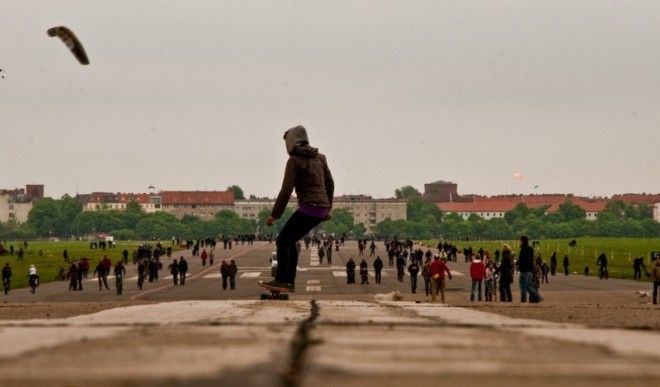
The airport’s grounds were originally a parade field for the Prussian army, and later by unified German forces, from 1720 right up to the start of World War I. The site has a long association with flight with some of the earliest flight attempts being made here. During the end of the 19th century, Tempelhof field was used to launch gas balloons as a kind of airlift service, flying more than nine tons of mail and 155 people out of town. In 1909, Frenchman Armand Zipfel made the first flight demonstration in Tempelhof, and later that same year, Orville Wright, together with his brother Wilbur, became the first person to fly a steered motorised aircraft, in an airshow organized at Tempelhof.
Tempelhof was designated as an airport in 1923 and soon zeppelins were flying out of it. The old terminal was constructed in 1927 and the first commercial flights started. After the Nazi took over power in 1933, Adolf Hitler began expansion of the airport to accommodate the rapidly growing volumes of passenger traffic. The airport’s iconic arc-shaped hangar was built during this expansion. The roof was to have tiered seating for 80,000 spectators from where they could enjoy Luftwaffe air shows, but this couldn’t be completed because of disruption brought by the Second World War. Also remained unfinished were the planned waterfall, the large-scale office buildings that were to surround the western side of the circular plaza, and the control tower.
After the airport closed in 2008, the city of Berlin reclaimed the 386-hectare open space and one of the world's largest buildings in a central location for public use. Today, the area has a six-kilometer cycling, skating and jogging trail, a 2.5-hectare BBQ area, a dog-walking field covering around four hectares and an enormous picnic area for all visitors. One of the most popular activities in Tempelhof is still related flying, but the gigantic machines that once occupied the airspace over the airport has now been replaced by kites.
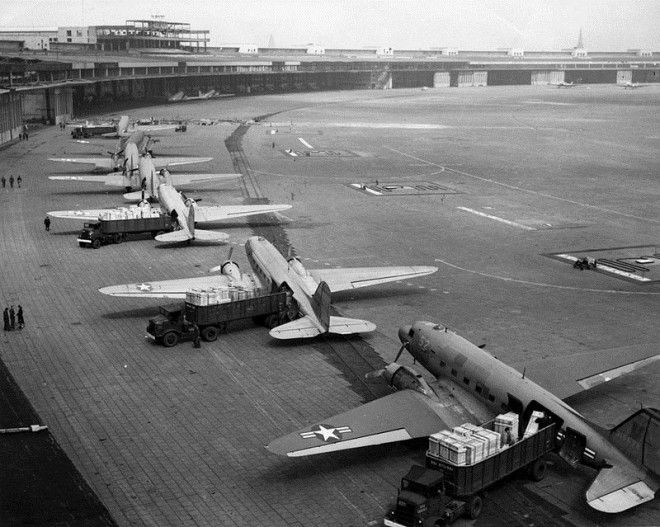
USAF Douglas C-47 transport planes preparing to take off from Tempelhof during the Berlin Airlift, August 1948.

